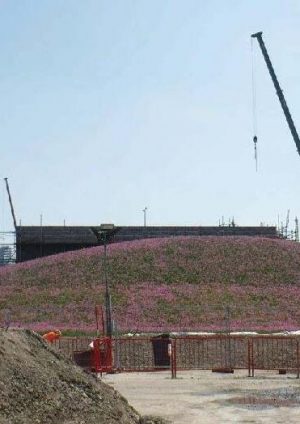
Biodiversity Accounting Report
Document
type: Micro-report
Author:
Lorna Mellings BSc MSc CEnv MIEMA
Publication
Date: 09/07/2018
-
Abstract
In recognising the importance of understanding biodiversity losses, Crossrail undertook a study to assess and quantify the amount of biodiversity to be lost and gained as a result of development at seventeen of the Crossrail sites across London (Central Section). The Defra toolkit for calculating “biodiversity units” was used to calculate the losses and gains. This toolkit was developed after the Crossrail programme Environmental Statement has been produced (2005) and also after main construction works had commenced therefore the study is designed to be an accounting exercise at the end of the project rather than to identify offsetting opportunities. It would be of interest to any major project looking to assess their biodiversity impact.
-
Read the full document
Introduction and Industry Context
Following extensive consultation with interested stakeholders, in March 2012, Defra and Natural England published a toolkit for using a system of ‘biodiversity units’ to measure and compare biodiversity gains and losses on a development site and any offset requirement necessary to compensate for predicted biodiversity loss.
By quantifying the habitat lost to the development footprint, a value is being put on the services provided by those habitats and thus a robust indication of the level of compensation needed to offset development activities is given. Defra states that “Biodiversity offsets are nature conservation activities designed to deliver biodiversity benefits in compensation for losses from development activity”[. Unlike previous forms of ecological compensation, there is a formal requirement for a quantitative calculation to demonstrate the loss and gain in biodiversity during the course of a development.
Losses (from the development footprint) and gains (from habitats created or enhanced as part of the development) are each measured in the same way, using a rigorous system of quantification. Firstly it can be seen if there is likely to be an overall loss in biodiversity on the site (and hence whether biodiversity offsetting is required), and secondly, where offsetting is required, the number of biodiversity units which need to be offset (to ensure no net loss or a net gain in biodiversity as a result of the development).
Crossrail Biodiversity
In recognising the importance of understanding biodiversity losses, Crossrail undertook a study to assess and quantify the amount of biodiversity to be lost and gained as a result of development at seventeen of the Crossrail sites across London (Central Section). Landscaping plans to be implemented after development and those already implemented allowed an assessment of biodiversity gain to be made on each site, and collectively across the Central section. The Defra toolkit for calculating ‘biodiversity units’ was used to calculate the losses and gains. The Defra toolkit was developed after the Crossrail programme Environmental Statement has been produced (2005) and also after main construction works had commenced therefore the study is designed to be an accounting exercise at the end of the project rather than to identify offsetting opportunities.
The Crossrail Environmental Minimum Requirements establish the following principles:
• After construction, habitats or ecological features that have been affected by construction activities will be reinstated or allowed to recolonise so that (as far as reasonably practicable), they recover to their pre-construction conditions;
• Where appropriate, landscape planting (other than ornamental and specimen tree planting) will be undertaken using native species typical of the area.
• Subject to any relevant approvals or agreements required for any restoration or mitigation schemes under Schedule 5 or 7 or 17 to the Act, land which is temporarily acquired or required in connection with the project will normally be restored to not less than former nature conservation value.Although several sites do display gains in biodiversity value, several sites also exhibit more significant losses. As such, the overall balance in biodiversity value resulting from development is a net loss of biodiversity units.
The most significant of these losses occurs at Limmo Peninsula Shaft and Westbourne Park, as a result of the loss of neutral grassland and woodland habitats in particular. The most significant gain occurs at Whitechapel station as a result of green roof creation. The full study can be accessed in the document links below.Lessons Learned and Recommendations for Future Projects
Although Crossrail was unable to use the DEFRA toolkit to its full potential due the timing of its release, the exercise provided a measure of the biodiversity lost and which could be recouped which had not previously been available. This in turn helped to identify what Crossrail could do to realise and optimise biodiversity opportunities and establish a target to do that. More generally, it provides a good illustration of the type of urban habitats that would typically be lost to linear infrastructure projects in towns and cities and how such projects can support biodiversity by identifying, optimising and then delivering habitat creation opportunities. Future projects would be able to use the tool in the early planning stages of the project to identify opportunities for habitat creation within the project footprint and also to identify any offsetting opportunities to ensure these were delivered during the timescales of the project.
References
[1] Department for Environment, Food and Rural Affairs and Natural England (April 2013): Collection “Biodiversity offsetting”. [Online], available at: http://www.defra.gov.uk/environment/natural/biodiversity/uk/offsetting/
-
Document Links
-
Authors
Lorna Mellings BSc MSc CEnv MIEMA - Crossrail Ltd
Lorna is the Environmental Assurance Manager at Crossrail. She is responsible for programme wide environmental best practice through various fora such as the Environmental Managers Forum and she is responsible for the promotion of a positive environmental culture throughout Crossrail, through managing and developing the Green Line environmental engagement award scheme. Lorna also provides technical environmental advice to the business, specifically with regards to excavated material, contaminated land and ecology.
Lorna joined Crossrail in 2008 as a Principal Environmental Planner having previously worked for Carillion on a number of national building projects and the Government’s Aspire Defence Project.

